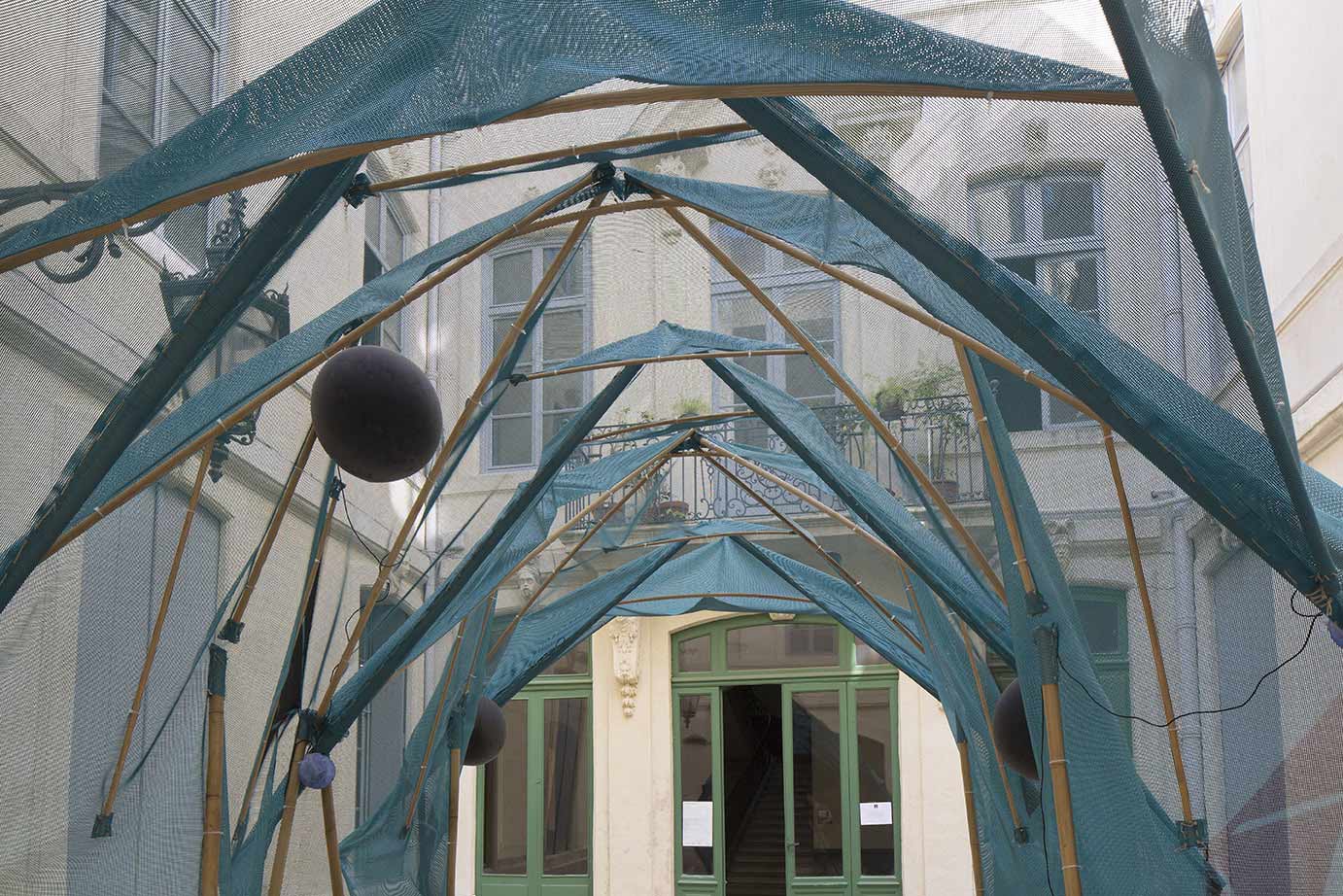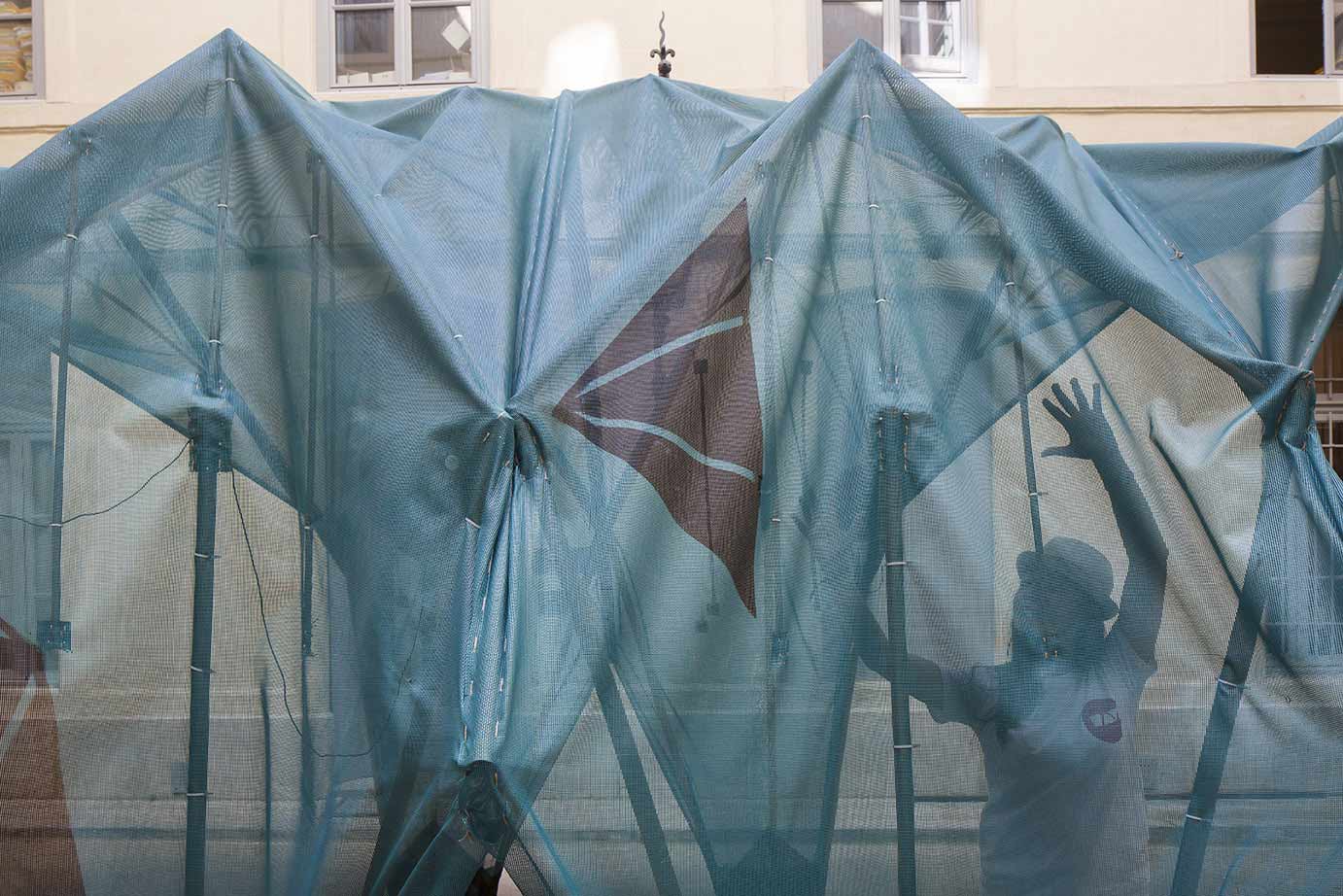Institute for Advanced Architecture of Catalonia - Ibrahim Berkay & Zeynep Birgönül & Harsh Boghani & Elif Gungor & Marjan Jelveh & Kismir Selcuk & Anand Singh & Angeliki Terezaki & Rodrigo Aguirre & Karen Beyens
Barcelone // Espagne
L'IAAC est un centre de recherche, d'éducation, et de développement international, orienté vers l’architecture comme une discipline qui traite de différentes échelles d'analyse territoriale et le développement urbain ainsi que divers projets d’architecture, les processus numériques et d'environnements d'information. Situé à Barcelone, l'une des capitales internationales de l'Urbanisme, l'IAAC développe des programmes multidisciplinaires qui explorent les phénomènes urbains et territoriaux internationaux, mettant l'accent sur les possibilités offertes par les territoires émergents et sur les valeurs culturelles, économiques et sociales de l'architecture. L'IAAC vise à prendre R+D de l'architecture et de l'urbanisme, générant des réseaux de connaissances multidisciplinaires, travaillant en collaboration avec un certain nombre de villes et régions, groupes industriels et centres de recherche, dont le MIT, sci-arc, CITA et d'autres, le développement de divers programmes de recherches réunissant des experts dans une variété de disciplines différentes. L'IAAC est une référence internationale, accueillant des étudiants et des chercheurs de divers pays du monde entier.
The Institute for Advanced Architecture of Catalonia (IAAC) is an international research, education, investigation and development centre, oriented toward architecture as a discipline that addresses different scales of territorial analysis and urban development as well as diverse architectural projects, digital processes and information environments. Located in Barcelona, one of the international capitals of Urbanism, IAAC develops multidisciplinary programs that explore international urban and territorial phenomena, emphasizing the opportunities arising from emergent territories and on cultural, economic and social values of architecture. IAAC aims to take R+D to architecture and urbanism, generating multidisciplinary knowledge networks, working in collaboration with a number of cities and regions, industrial groups and research centres, including the MIT, MIT, sci-arc, CITA and more, developing various research programs bringing together experts in a variety of different disciplines. IAAC is an international reference, welcoming students and investigators from diverse countries all around the world.
![]() L'installation de l’IaaC propose de créer un espace dans l'espace, un pavillon dans une cour intérieure, augmentant l'intimité et la vie privée qui suggère l’existance même de la cour. Le pavillon est une construction textile, généré avec le moins d’éléments structurels possible, suspendue dans l’air comme un drap jeté au vent. Il s'agit d'une structure légère et pliable, conçue et construite par les étudiants du cours académique Structure Expérimentale, qui font partis du Master en Architecture Avancée. Une fois installé dans la cour, le pavillon devéloppe son potentiel intéractif au travers d’une experience sensorielle. Entrant dans l’éspace créé, touchant les murs de textiles, la cour s’anime sous la forme d’un paysage de sons, du monde extérieur. La structure textile réagit aux utilisateurs au travers des sens de la vue, du toucher et de l'ouïe, évoquant une réalité différente.
L'installation de l’IaaC propose de créer un espace dans l'espace, un pavillon dans une cour intérieure, augmentant l'intimité et la vie privée qui suggère l’existance même de la cour. Le pavillon est une construction textile, généré avec le moins d’éléments structurels possible, suspendue dans l’air comme un drap jeté au vent. Il s'agit d'une structure légère et pliable, conçue et construite par les étudiants du cours académique Structure Expérimentale, qui font partis du Master en Architecture Avancée. Une fois installé dans la cour, le pavillon devéloppe son potentiel intéractif au travers d’une experience sensorielle. Entrant dans l’éspace créé, touchant les murs de textiles, la cour s’anime sous la forme d’un paysage de sons, du monde extérieur. La structure textile réagit aux utilisateurs au travers des sens de la vue, du toucher et de l'ouïe, évoquant une réalité différente.
The IaaC installation proposes to create a space within space, a pavilion in a courtyard, to enhance the intimacy and privacy suggested by the existing courtyard. The pavilion is a textile construction, generated through the use of the least possible structural elements, floating in equilibrium like a sheet strewn in the wind. The structure is lightweight and collapsable, designed and built by students in the framework of the Experimental Structures academic course in the Masters in Advanced Architecture course. When installed in the courtyard, the pavilion develops its interactive potential through a sensoral experience. Entering this new living space in the courtyard and touching the fabric walls, the courtyard takes life under the form of a soundscape from the outside world. The textile structure reacts to the users incorporating the senses of sight, touch and hearing, finally evoking a diverse reality.
The Institute for Advanced Architecture of Catalonia (IAAC) is an international research, education, investigation and development centre, oriented toward architecture as a discipline that addresses different scales of territorial analysis and urban development as well as diverse architectural projects, digital processes and information environments. Located in Barcelona, one of the international capitals of Urbanism, IAAC develops multidisciplinary programs that explore international urban and territorial phenomena, emphasizing the opportunities arising from emergent territories and on cultural, economic and social values of architecture. IAAC aims to take R+D to architecture and urbanism, generating multidisciplinary knowledge networks, working in collaboration with a number of cities and regions, industrial groups and research centres, including the MIT, MIT, sci-arc, CITA and more, developing various research programs bringing together experts in a variety of different disciplines. IAAC is an international reference, welcoming students and investigators from diverse countries all around the world.

The IaaC installation proposes to create a space within space, a pavilion in a courtyard, to enhance the intimacy and privacy suggested by the existing courtyard. The pavilion is a textile construction, generated through the use of the least possible structural elements, floating in equilibrium like a sheet strewn in the wind. The structure is lightweight and collapsable, designed and built by students in the framework of the Experimental Structures academic course in the Masters in Advanced Architecture course. When installed in the courtyard, the pavilion develops its interactive potential through a sensoral experience. Entering this new living space in the courtyard and touching the fabric walls, the courtyard takes life under the form of a soundscape from the outside world. The textile structure reacts to the users incorporating the senses of sight, touch and hearing, finally evoking a diverse reality.



©photoarchitecture
